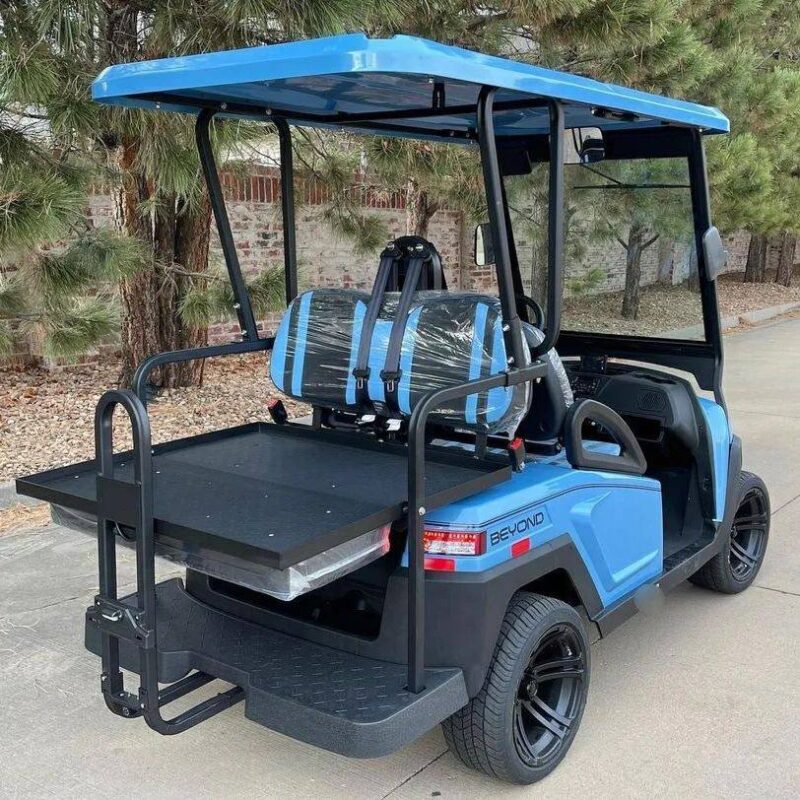Style
Electric Golf Cart vs. Electric Golf Carts
Electric Golf Cart vs. Electric Golf Carts in 2024: A Comparative Analysis
As the world continues to embrace sustainable and eco-friendly transportation solutions, the debate between using an individual electric golf cart versus a fleet of electric golf carts gains significance in 2024. Golf courses, communities, and various recreational spaces have increasingly shifted towards electric options to minimize their environmental impact. In this article, we will explore the distinctions between an individual electric golf cart and electric golf carts used collectively, assessing their benefits, drawbacks, and current trends in 2024.
Electric Golf Cart
– Individual Use: Individual electric golf carts are designed for personal use on golf courses or in residential areas. They typically accommodate two to four passengers and are ideal for those who prefer a personalized and leisurely golfing experience. These carts are equipped with electric motors, providing a quiet and smooth ride without the emissions associated with traditional gas-powered carts.
Electric Golf Carts – Fleet Use: In contrast, electric golf carts used collectively as a fleet serve broader purposes beyond individual recreation. Golf courses, resorts, and large recreational areas often employ fleets of electric golf carts to transport multiple players, visitors, or staff efficiently. Fleet management systems enable precise control and maintenance of these carts, ensuring their optimal performance throughout extensive daily use.
Comparative Analysis:
1. Environmental Impact: Electric Golf Cart (Individual): Limited to personal use, individual electric golf carts contribute to reducing the carbon footprint associated with traditional gas-powered models. Electric Golf Carts (Fleet): Operating a fleet of electric golf carts amplifies the environmental benefits, especially when replacing an entire fleet of gas-powered carts.
2. Cost Considerations: Electric Golf Cart (Individual): The initial cost is generally lower compared to managing a fleet. Maintenance and charging expenses are also more predictable for individual owners. Electric Golf Carts (Fleet): Initial investment and ongoing maintenance costs may be higher for a fleet, but economies of scale can be realized with proper management.
3. Versatility: Electric Golf Cart (Individual): Geared towards personal convenience, individual carts provide flexibility for golfers to navigate at their own pace. Electric Golf Carts (Fleet): Fleet carts are versatile, catering to the diverse needs of larger groups, whether transporting golfers around a course or serving as shuttle services in recreational areas.
FAQs about Electric Golf Cart vs. Electric Golf Carts in 2024:
Q1: Are electric golf carts more expensive than traditional gas-powered ones? Answer: Initially, electric golf carts may have a higher upfront cost, but the long-term operational savings and reduced maintenance costs often make them more cost-effective.
Q2: Can individual electric golf carts be upgraded to a fleet management system? Answer: In some cases, individual electric golf carts can be retrofitted with fleet management systems, but it depends on the specific model and compatibility.
Q3: How long does the battery of an electric golf cart typically last? Answer: The lifespan of an electric golf cart battery varies, but advancements in battery technology have extended the average life to several years with proper maintenance.
Q4: Are there government incentives for adopting electric golf carts or fleets? Answer: Depending on the region, there may be incentives or tax credits for adopting electric vehicles, including golf carts. It’s advisable to check with local authorities for applicable programs.
Q5: Can fleets of electric golf carts be charged simultaneously? Answer: Yes, fleets equipped with charging infrastructure can be charged simultaneously, ensuring they are ready for use during peak hours.
Conclusion: In 2024, the choice between an individual electric golf cart and a fleet of electric golf carts depends on specific needs, scale, and intended usage. As sustainability becomes a driving force in transportation, both individual owners and fleet managers must consider the long-term benefits and environmental impact of their choices.

